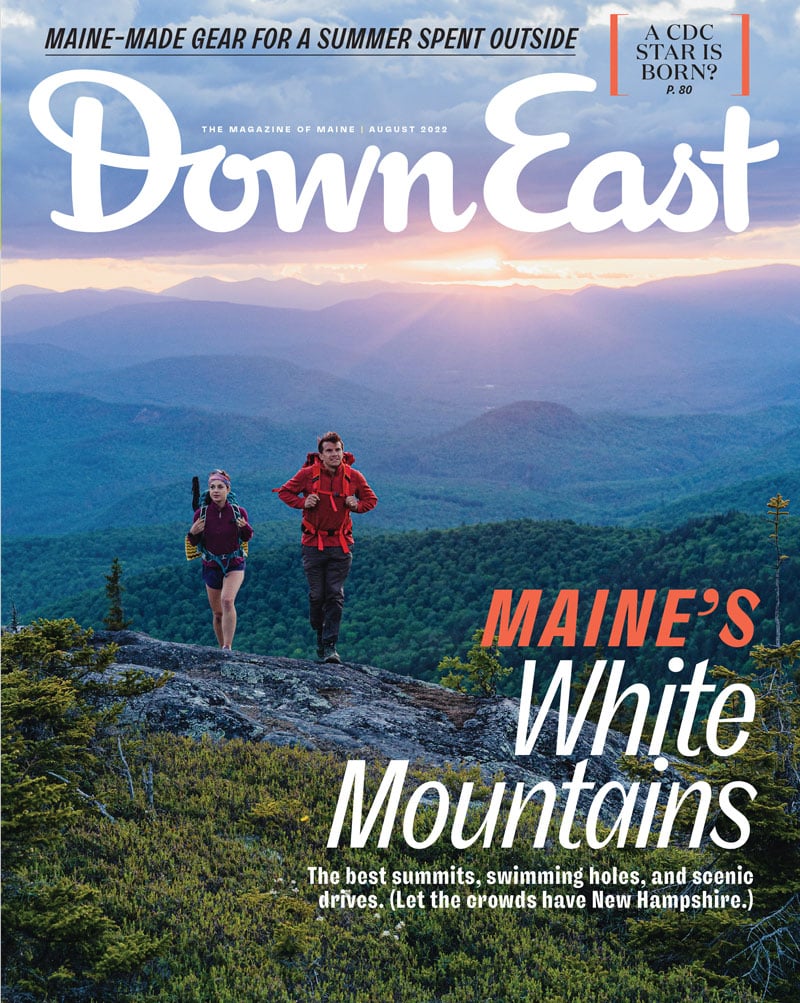When he included this image, from his early days shooting in Maine, in his 1997 book Sightings, Ralston titled it Glint, for the look in the herring gull’s eye. “It embodied the larger wariness I was discovering around me back then,” he says, “in both natural and human realms.”
By Philip Conkling
Photograph by Peter Ralston
From our August 2022 issue
We live on a small island with only a half-dozen houses and a big nature preserve, connected to a larger island with a long, crenelated shoreline. Because there are virtually no predators on these islands, they are full of birds at all seasons of the year. In high summer, lots of exotically colored neotropical migrants flit through trees and shrubs. Periodically, bald eagles and various hawks cruise overhead.
Years ago, when I first began paying attention to birds, I was thrilled with the rare and secretive ones. I once saw a scarlet tanager on migration land in a patch of open meadow — and my goodness! What splendid raiment, like nothing I had ever seen before or since. I trained myself to sit motionless, like a Zen student, in the deep pockets of spruce trees, listening to the ascending triads of the song of the Swainson’s thrush. I learned how, in crepuscular light, to tune my ear to catch the fluting sound of wind through a woodcock’s flight feathers, meant to enthrall his shy mate hidden in the tall grass.
Rarity is an intoxication. I will never forget the thrill of seeing my first razor-billed auk at the extreme eastern end of the archipelago, before they expanded their range to the midcoast. But lately, I am more entranced by the majesty of the herring gulls and the antics of common crows. Familiarity does not breed contempt, but the reverse. These common birds share some important traits that contribute to their evolutionary success. First, they are relatively comfortable around humans, which is a good thing because there are more and more of us everywhere, all the time. Crows and gulls are opportunists and, like us, enjoy foraging along shorelines, fresh and salt. Like us, they are colonial, meaning they are successful precisely because they cooperate, especially by announcing the location of a patch of food that is more than they can eat. They have loud, rude voices — and I mean voices — that mean different things. The guttural chuckle of a crow is not like their alarm call when you let the dog or cat out. The call of a herring-gull chick begging for food makes soft the selfish appetites of the adults.
This morning, I watched a common flicker hunting insects along an edge of a patch of rugosa roses. It reminded me of a natural-history puzzle I spent five summers unraveling. During regular walks along the same path of a red- and white-spruce forest, once quarried for paving stones, I wandered through occasional breaks in the canopy that had grown over with dense, luxurious mats of gray-green lichen. Every June — but at no other time — I found fresh clumps of the delicate lichen mat rudely ripped up and tossed aside whole. I wondered: Dog? But why? A foraging mink from the tide line? The opening was too small for a gull to land. Maybe a crow in some sort of mating display?
Then, one morning, no different from a hundred others, I flushed a flicker that had been anting in the lichen patch, turning the patches over to collect the little pieces of fat and protein. Its red head, yellow shafts, and white tail underscored its uncommon good looks — and discriminating spring diet.
You need not go to the ends of the earth for nature to open your eyes. Instead, you can go to the same places over and over again and, slowly, begin to understand the eternal nature of things.




